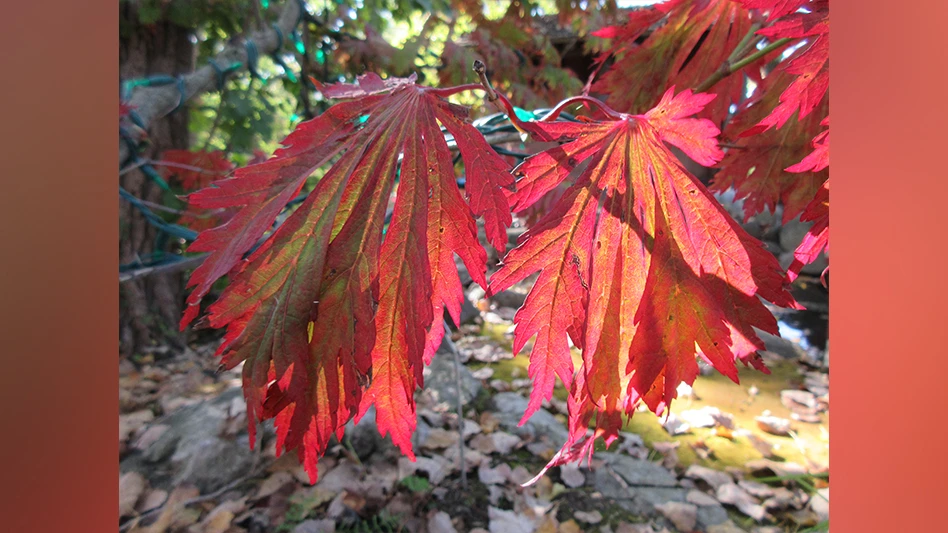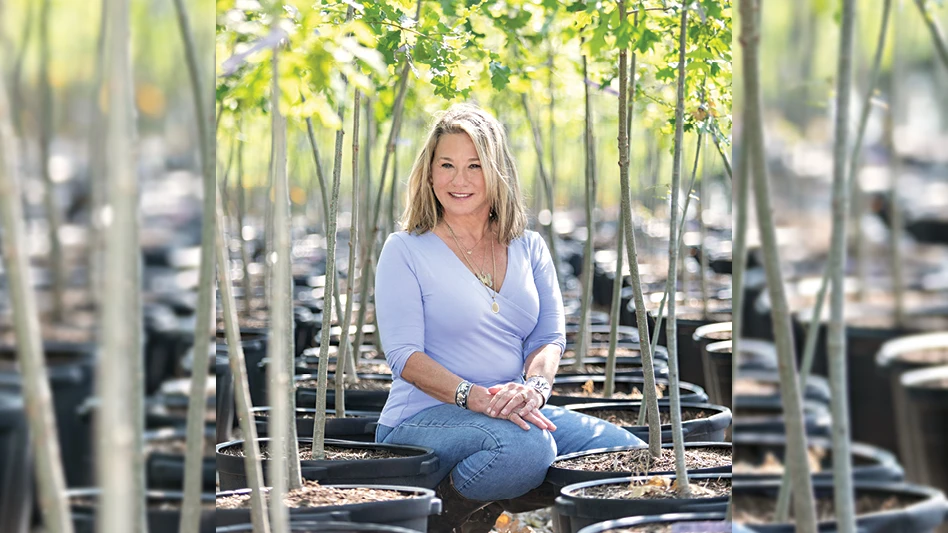
_fmt.png)
I’ve closely observed a trio of 20-year-old specimens of ‘Aconitifolium’ full moon maple and two consistent features are re-emphasized and appreciated every year; amazing fall color and a stalwart hardiness. Native to mountainous areas of Japan, Manchuria and Korea, this maple species prefers light, dappled shade, cool summers and sites protected from strong winds. Moist, organically rich and slightly acidic soils are preferred. Well-drained soils are a necessity. The straight species (A. japonicum) is taller but this compact, mounded and frequently multi-trunked selection tops out between 10 feet and 15 feet with a similar width. Early staking efforts can encourage more erect growth.

The rounded, palmate and deeply divided (toothed and cut) leaves have 7-11 lobes and the varietal name of ‘Aconitifolium’ refers to “foliage of Aconitum” (like a monkshood) which is not hard to discern. Some degree of shading is preferred for this tree as leaves may scorch in full sun, particularly in areas with warmer summers. The fall color of this tree transitions, even in part shade, from an intense orange-red to the deepest of carmine-red tones and this progression lasts many weeks. I would not hesitate to say that the fall color of this tree is a personal favorite and one of the most intense and memorable. This tree does poorly south of USDA Zone 7. Consider mulching to keep the roots cool. The smallish, purple-red flowers in early spring put on a minor show prior to the foliage emerging but the fall color is the star of the show.
I’ve planted many specimens of this tree and recommended it to many clients in the Midwest as I’ve observed this selection emerge from the coldest of Midwest winters with no damage while Japanese maples (Acer palmatum) have been severely damaged or killed. This variety is thought to be hardier than other selections of A. japonicum as well as the straight species. There is some susceptibility to verticillium wilt, leaf spots, root rots, anthracnose, cankers and some insects as is the case with many maples. Propagation is commonly through grafting or softwood cuttings.
Why grow Acer japonicum ‘Aconitifolium’?
- Amazing and long-lasting ruby-crimson fall color
- Excellent small tree for the smaller garden
- Significant textural accent
- Award of Garden Merit from the Royal Horticultural Society (1984)



Explore the August 2023 Issue
Check out more from this issue and find your next story to read.
Latest from Nursery Management
- Ellen Mackenbach-Lakeman appointed new CEO of Dümmen Orange
- Southern Garden Tour sets 2025 dates for trial garden open houses
- New book explores plants that thrive in Rocky Mountains
- American Floral Endowment establishes Herman Meinders Memorial Tribute
- These companies are utilizing plastic alternatives to reduce horticultural waste
- NewGen Boxwood added to Proven Winners ColorChoice line
- Terra Nova releases new echinacea variety, 'Fringe Festival'
- American Horticultural Society names winners of 2025 AHS Book Awards





